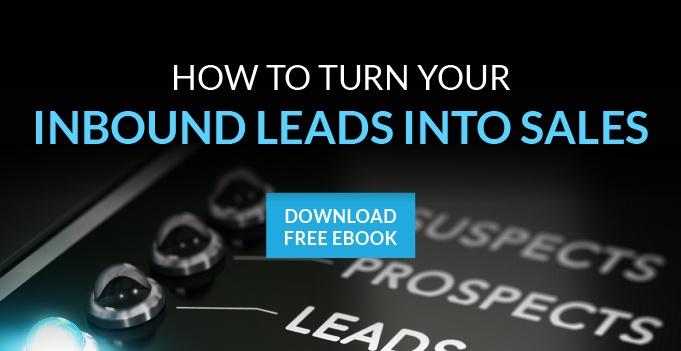 For as much as we like to talk about inbound marketing and the great ways it revolutionizes modern marketing, it doesn’t change too much when it comes to sales. We still need salespeople and a mostly standard sales process to work in conjunction with our marketing department. It’s not unfortunate because I have anything against sales – love ya’, sales! – but simply because it is sometimes an inefficient process. Sales is hard, and the vast majority of our sales calls/emails will be unsuccessful. It’s just the nature of the business.
For as much as we like to talk about inbound marketing and the great ways it revolutionizes modern marketing, it doesn’t change too much when it comes to sales. We still need salespeople and a mostly standard sales process to work in conjunction with our marketing department. It’s not unfortunate because I have anything against sales – love ya’, sales! – but simply because it is sometimes an inefficient process. Sales is hard, and the vast majority of our sales calls/emails will be unsuccessful. It’s just the nature of the business.
Since we’re still dealing with a pretty standard sales practice, the importance of following-up cannot be understated. You must follow up with every lead, and this is often when the actual sale is going to be completed. A follow-up is your chance to force the lead into making a decision: will you buy our product/service, or will you decline?
So when’s the best time to follow up with a lead? Well, that depends…
The follow-up process should begin immediately
Not all follow-ups have to be by phone. Since we have email at our disposal, we should definitely put it to good use with follow-ups. If you’re utilizing inbound marketing strategies, then your lead process begins when a website visitor provides contact information in exchange for a content offer. Your follow-up procedure should begin immediately after that, with a welcome email sent once the content offer is downloaded. By using marketing automation software (such as HubSpot), you can set up workflows to ensure those emails are sent out automatically.
Keeping the lead “on the leash”
Calling the lead immediately may not be feasible – depending on your number of sales people, it may take some time to get to them. Additionally, you’re not sure how interested they are right now. All it costs most people is a little time when they download a content offer; is it a passing fancy, or will they still be interested tomorrow?
To help you out in this situation, you should continue to send follow-up emails to the lead. At least once every 1-2 weeks, they should receive an email from your business. Their reaction and response to these emails can help you determine their level of interest, and if they seem to be intrigued, that’s a sign you should contact them personally very soon. Additionally, if they weren’t that interested to begin with, your repeated emails may change that.
Making the call
Picking up the phone and actually calling a lead is a major step; a phone call requires a lead to take a break from their normal routine and speak to you, which they might not be willing to do. If they do agree to speak on the phone, keep in mind that this may be your only opportunity to speak to the lead (no pressure, huh?). Therefore, you should be amply prepared, having done some research on the lead to try to find something to relate to. For instance, did you discover they have kids that play high school sports? Perhaps bring up your own fond memories of playing high school sports. Anything you can do to build a connection with the lead is a good idea.
So when should this call finally take place? Well, within 2-3 weeks of the lead downloading a content offer is good, but you should also consider how responsive they’ve been to your emails. If they’re opening them all and clicking on links inside, they’re ready to be contacted soon. If they’re ignoring your emails, clearly they’re not that interested and shouldn’t be a priority.


Comments